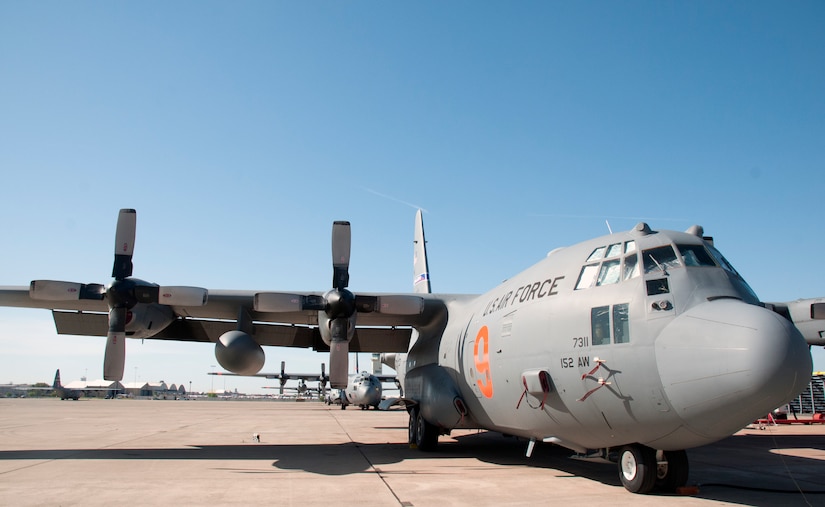By Air Force 2nd Lt. Emerson Marcus, 152nd Airlift Wing
SACRAMENTO, Calif. -- As temperatures heated up in northern
California, aerial firefighters from four C-130 airlift wings operating the
U.S. Forest Service‘s Modular Airborne Fire Fighting System began a weeklong
training exercise here April 23.
The training, sponsored by the Forest Service at McClellan
Reload Base in Sacramento, includes four military airlift wings that make up
the air expeditionary group: three Air National Guard units from California,
Nevada and Wyoming, and one Air Force Reserve unit from Colorado.
“Training with all four MAFFS wings alongside the U.S.
Forest Service, [the California Department of Forestry and Fire Protection] and
other wildland firefighting agencies here in Sacramento provides a significant
opportunity as we prepare for wildland fire season,” said Air Force Col. James
DeVere, commander of the MAFFS Air Expeditionary Group and the Air Force
Reserve’s 302nd Airlift Wing.
Protecting Citizens, Property
“Training collectively ensures overall standardization of operations
while continuing to build working relationships with the key players in the
wildland firefighting community,” DeVere said. “It is rewarding as Guardsmen
and reservists to stand alongside our agency partners, knowing that we help
make a difference protecting our citizens and their property.”
The Forest Service’s MAFFS equipment -- rolled into the back
of a C-130 aircraft -- can drop up to 3,000 gallons of water or fire retardant
in six seconds through a nozzle on the rear left side of the plane.
The certification training includes classroom sessions and
flight operations for military flight crews, lead plane pilots and other
support personnel from the U.S. Forest Service and other wildland firefighting
agencies.
“Wildland fire management agencies have relied on MAFFS for
more than 40 years to provide surge capacity when commercial air tankers are
fully committed or not readily available, as they frequently are during periods
of high wildfire activity,” said Kim Christensen, deputy assistant director for
operations for the U.S. Forest Service. “Training that includes all of the
military and civilian personnel that work together when MAFFS are mobilized is
critical to ensure that military aircraft fly safely and effectively and that
they can be seamlessly integrated into wildfire suppression operations.”
Participating airlift wings include three Air National Guard
units -- the 146th Airlift Wing from Port Hueneme, California; the 152nd
Airlift Wing from Reno, Nevada; the 153rd Airlift Wing from Cheyenne, Wyoming
-- and the Air Force Reserve Command’s 302nd Airlift Wing from Peterson Air
Force Base, Colorado.
Training water drops will be executed on lands within the
Tahoe and Shasta-Trinity national forests. California residents in these areas
may see low-flying Forest Service lead planes and C-130s dropping water this
week.
In the past decade, military C-130s equipped with MAFFS
delivered more than 8 million gallons of fire retardant to aid in the
suppression of wildfires around the United States.
MAFFS aircraft are activated to supplement commercial air
tankers contracted by the Forest Service during periods of high wildfire
activity throughout the nation. They are also activated by governors to assist
with wildfire suppression in states where the Air National Guard units that
provide the C-130s are located, including California.

No comments:
Post a Comment